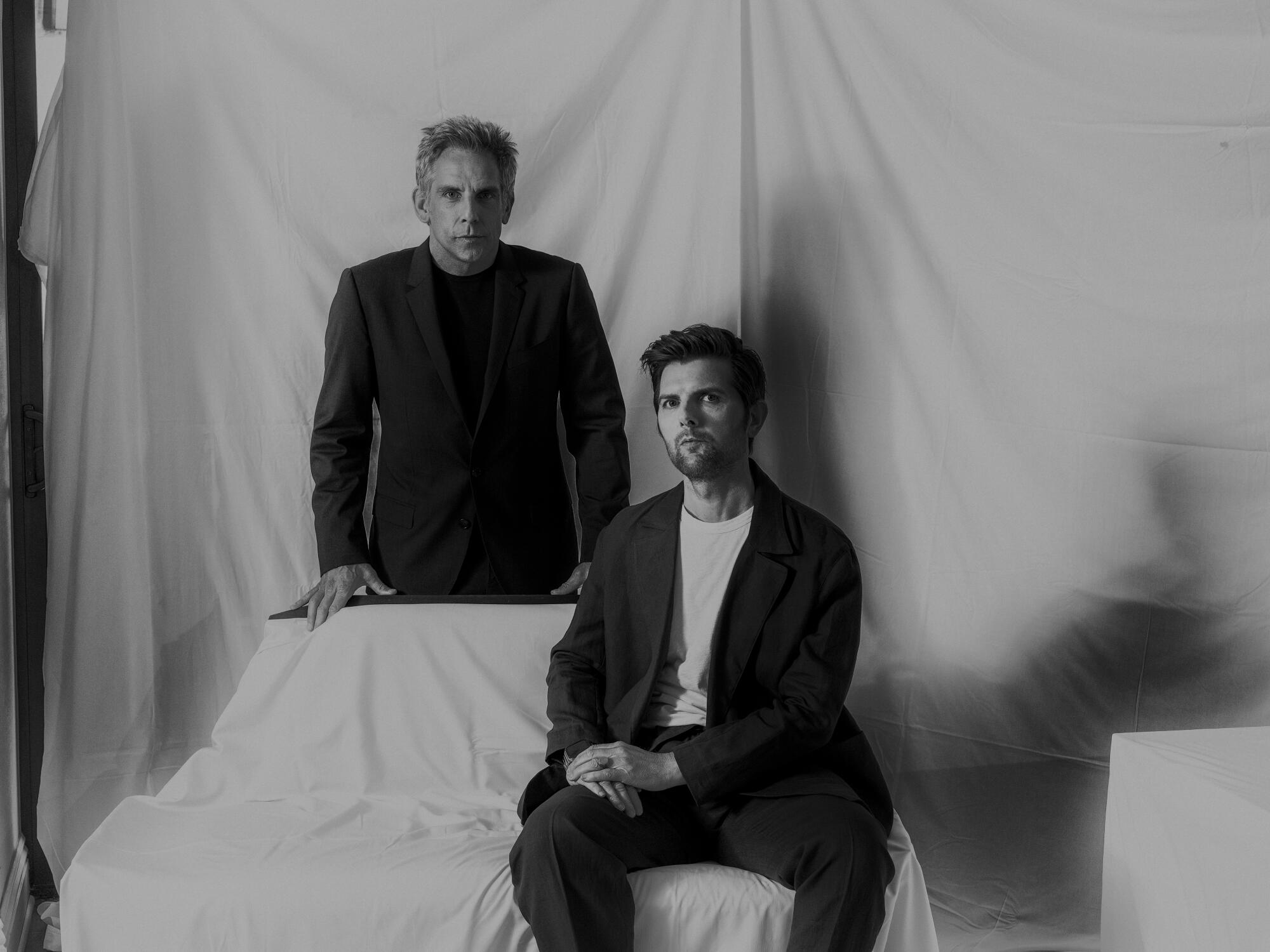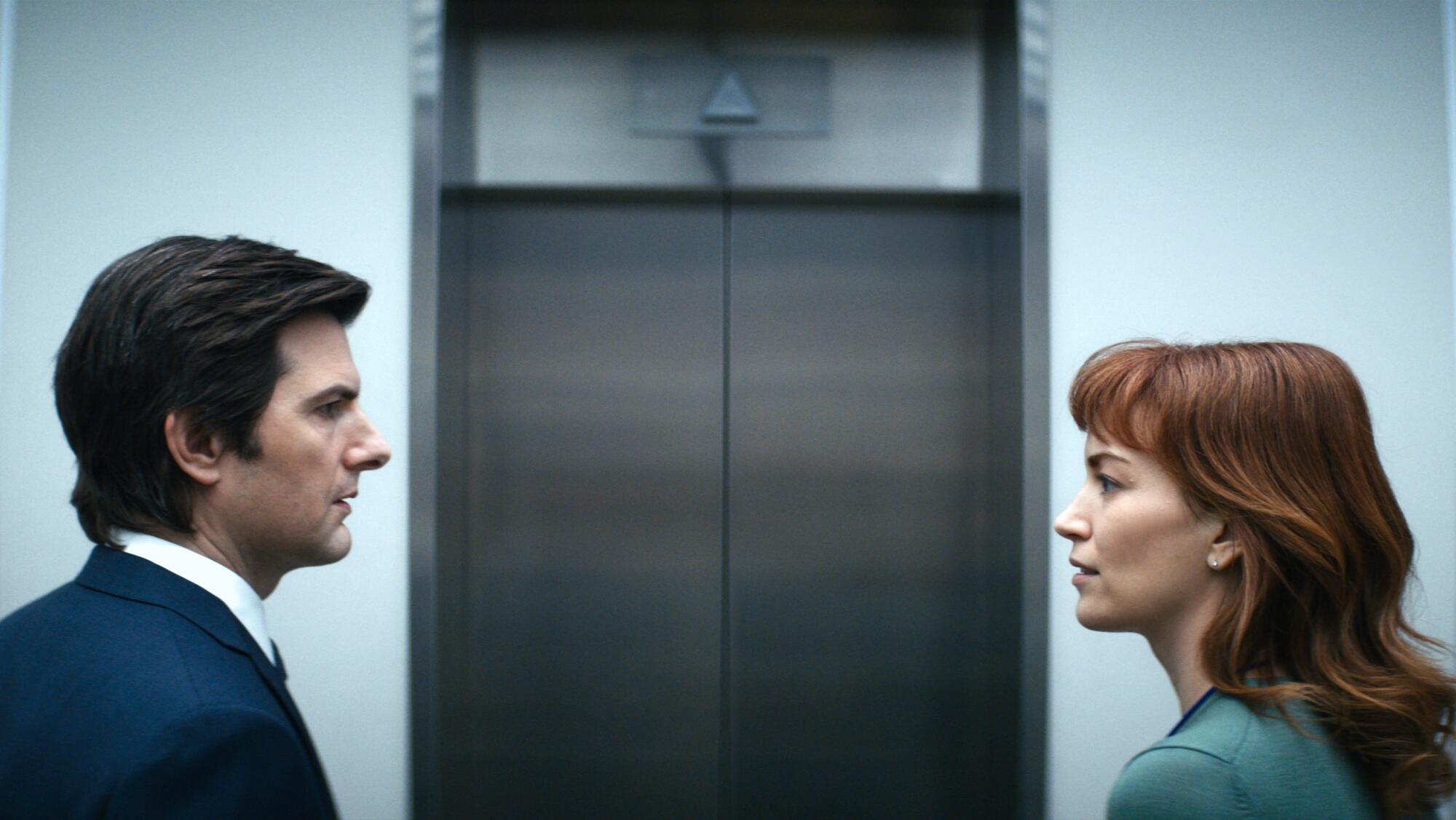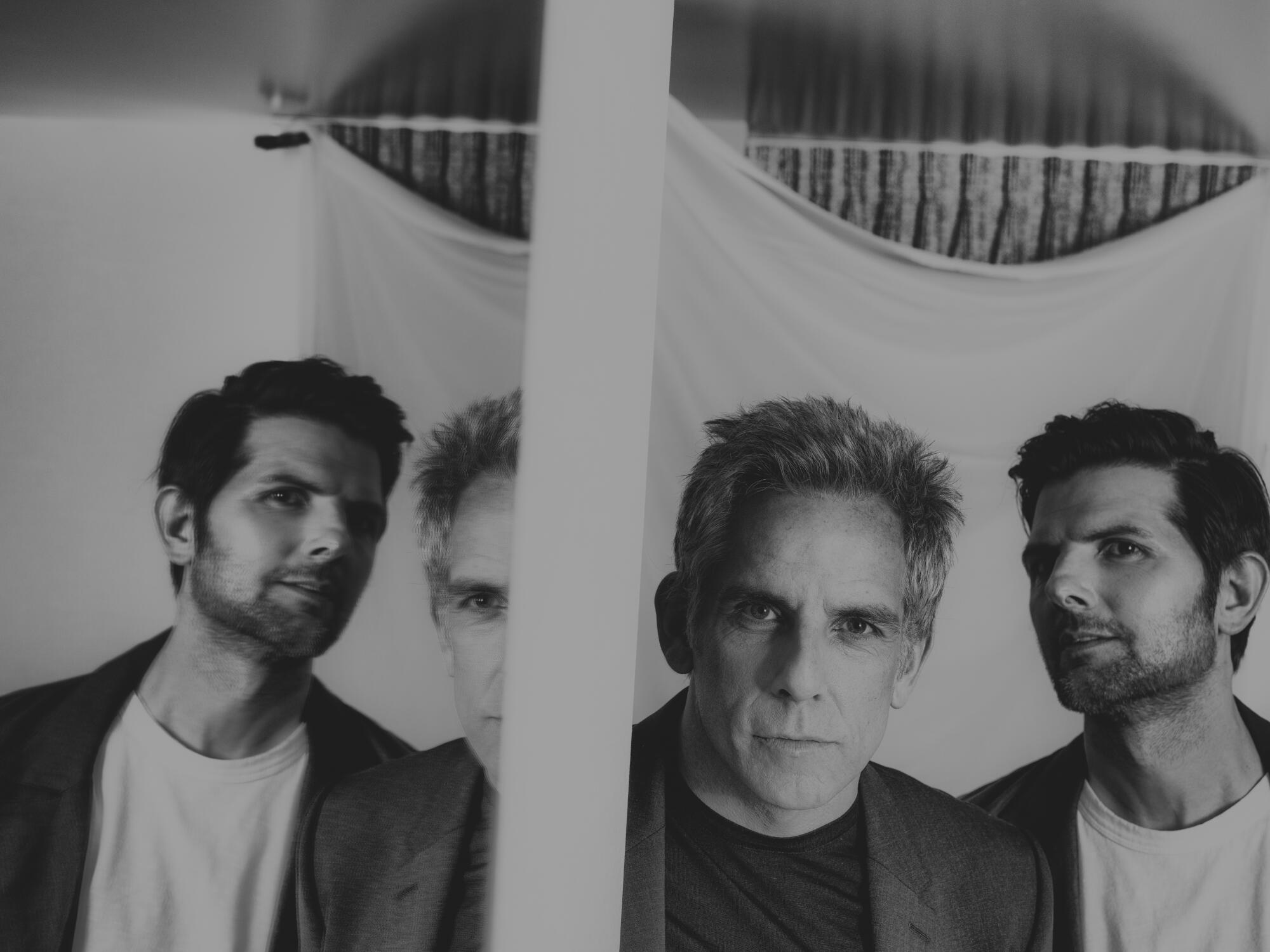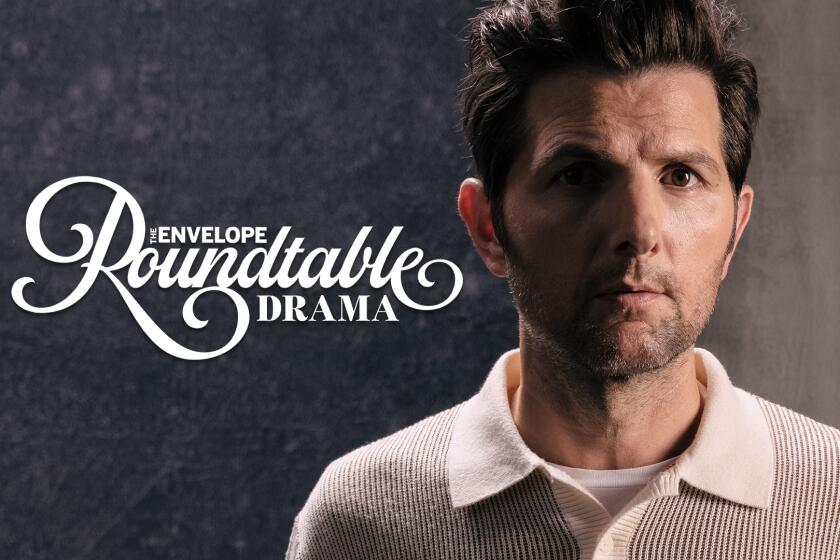- Share via

For Ben Stiller and Adam Scott, the positive response to their seriocomic dystopian Apple TV+ series “Severance” means different kinds of relief. For executive producer-director Stiller, it’s the reassurance that he and audiences can still see eye to eye, especially on something tricky and genre-bending.
“I’ve experienced it all, so to see how people are invested in the show, it’s a great feeling,” he said recently over a video call with his lead actor, Scott, who plays Mark, a man whose work existence and home life are neurologically walled off from each other in his surgically altered brain.
For Scott, the fan love assuaged the nerves he felt doing justice to a project he loved. “It’s the kind of role I’ve always wanted,” says Scott. “I’ve been working toward this some 20-odd years, so the reaction has been the best-case scenario.” Here, the two discuss splitting a character in two, the tough shooting conditions and trusting each other.
Six Emmy contenders, including Adam Scott, Jin Ha, Rhea Seehorn and Kaitlyn Dever, discuss learning from teachers, collaborating with directors and watching themselves in our 2022 Envelope Drama Roundtable.
The show hinges on actors splitting a single character into two. So how did you both work out the differences in Adam’s portrayals of Innie Mark, loyal employee of the mysterious company Lumon, and Outtie Mark, hard-drinking, caustically witty widower in his off-hours?
Scott: I think it was important that it feel like the same person, so the shifts between the two were more internal. It would manifest itself in subtly physical ways. It’s the same guy; it’s just one of them has 40-odd years of grief and happiness and sorrow and all those things that go with a full life, and the other one is 2½ years old.
Stiller: The reality is, [Innie Mark] hasn’t had much experience, but those memories and experiences are in him. They’re just not accessible. The question is, how much is seeping through?, and that subtlety is what I think about with what Adam was doing.

Scott: I would check in with Ben here and there, like, “Is it enough?” He was always reassuring. Because I was losing perspective. You know, when we started shooting, I wasn’t sure I could do this. Amy Poehler likes to say when you’re starting something new, you’re at the bottom of Show Mountain. There’s just this steep incline ahead of you. I just put all this trust into Ben, and I’m so glad I did because there’s no one I’ve trusted more in taste and feeling and tone and everything.
Stiller: I felt like it was subtle, and it was very specific. When a good actor does that, it reads, and you trust that you don’t need to do a lot on the outside. It was a real lesson for me, watching Adam.
The pandemic made us all examine our work and home lives. Was “Severance” inadvertently enriched by being made and released during the pandemic?
Stiller: While it was a really rich, creative experience, it wasn’t super fun because of these tough conditions, and that was for every show. But our show happens to deal with that work-life issue. We’re all still struggling to psychologically figure a way to go forward. I think there’s a lot of unanswered questions in our show that maybe mirror what people are feeling in life right now.
Scott: For me, the isolation on the show was directly mirrored in everyone’s daily life. I was away from my family. We couldn’t see each other. I was alone in an apartment, at 6 a.m. I’d get in a van, sealed off in the backseat, go to the stage, work on the show, which is this isolated, strange world, get back in the van, go back, eat, sleep and wait for the van the next morning. It took on this solitary pattern similar to the show.

And that brightly lighted, soulless, windowless basement warren of hallways and offices is something else. It had to put you both in the proper mood.
Scott: You can’t help but feel claustrophobic, and … of Lumon once you’re in that room with that carpet and low ceiling, and this grouping of desks in the middle of this vast space. It was additive for all the actors. Those hallways we walked down, those are all built. You have to walk through those to get to the set. I would say 70% of the time I would get lost, hit a dead end and have to yell out for someone.
Stiller: We used every inch of the soundstage we had. That opening shot of the pilot when Mark goes down for the first time was just us saying, “Let’s see what we could do if we did one shot that took Adam all the way through the hallways.” That was an experiment, really, because we had the ability to do it.
Did making “Severance” teach you anything new about what you do for a living?
Stiller: I learned an enormous amount on this project. I was going out of my comfort zone in terms of types of situations and genres. But the biggest thing was perseverance because of the obstacles, the years leading up to making the show and the bubble with it. The triumph was we finished it.
Scott: Putting my trust in other people, letting go a bit to focus on the task at hand. Perseverance is important too. Because the whole thing was a big swing. That was another [lesson] — big swings only. Making a TV show is hard, so why not make it a big swing every time, you know?
More to Read
From the Oscars to the Emmys.
Get the Envelope newsletter for exclusive awards season coverage, behind-the-scenes stories from the Envelope podcast and columnist Glenn Whipp’s must-read analysis.
You may occasionally receive promotional content from the Los Angeles Times.











